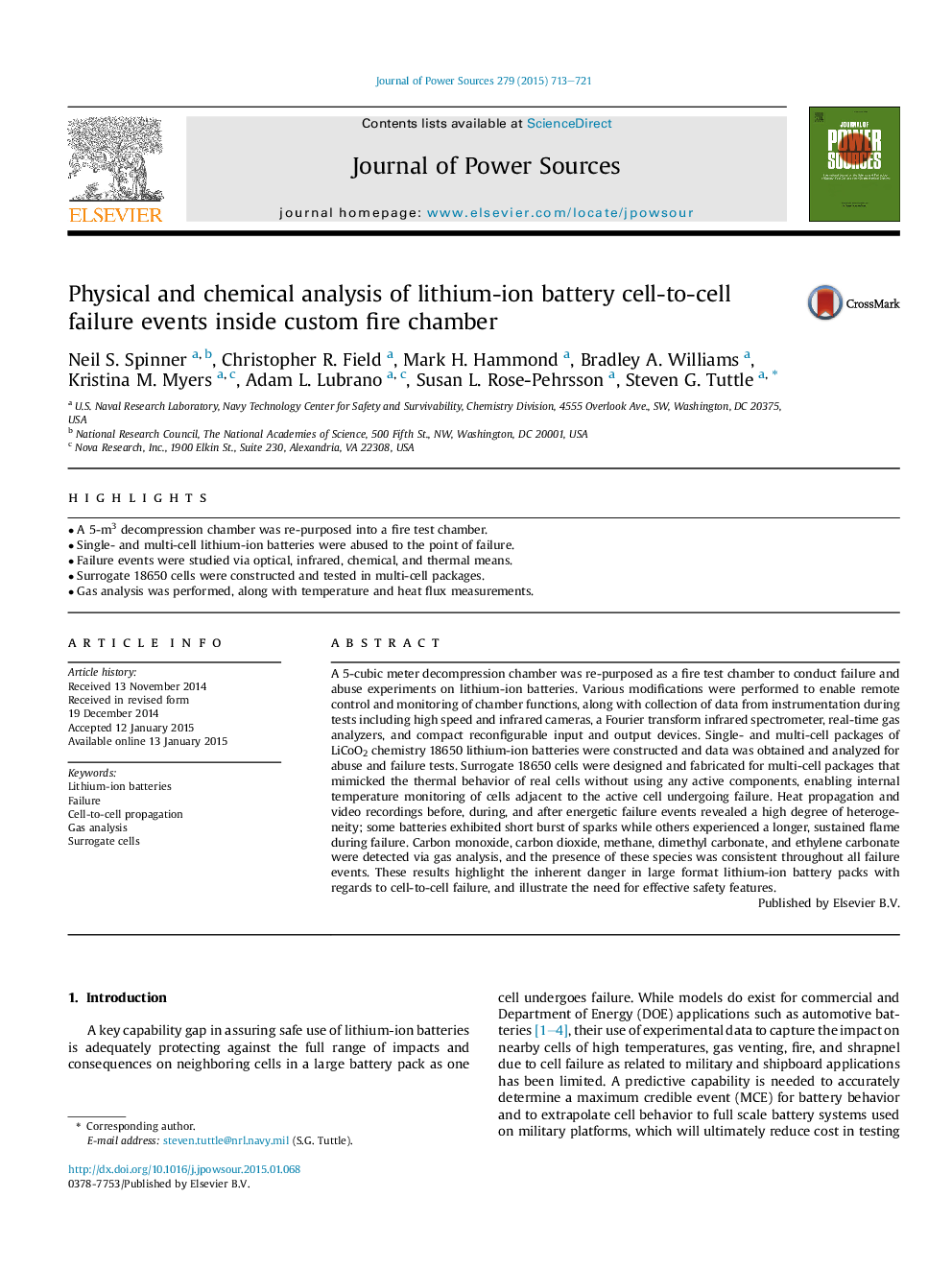| Article ID | Journal | Published Year | Pages | File Type |
|---|---|---|---|---|
| 7733933 | Journal of Power Sources | 2015 | 9 Pages |
Abstract
A 5-cubic meter decompression chamber was re-purposed as a fire test chamber to conduct failure and abuse experiments on lithium-ion batteries. Various modifications were performed to enable remote control and monitoring of chamber functions, along with collection of data from instrumentation during tests including high speed and infrared cameras, a Fourier transform infrared spectrometer, real-time gas analyzers, and compact reconfigurable input and output devices. Single- and multi-cell packages of LiCoO2 chemistry 18650 lithium-ion batteries were constructed and data was obtained and analyzed for abuse and failure tests. Surrogate 18650 cells were designed and fabricated for multi-cell packages that mimicked the thermal behavior of real cells without using any active components, enabling internal temperature monitoring of cells adjacent to the active cell undergoing failure. Heat propagation and video recordings before, during, and after energetic failure events revealed a high degree of heterogeneity; some batteries exhibited short burst of sparks while others experienced a longer, sustained flame during failure. Carbon monoxide, carbon dioxide, methane, dimethyl carbonate, and ethylene carbonate were detected via gas analysis, and the presence of these species was consistent throughout all failure events. These results highlight the inherent danger in large format lithium-ion battery packs with regards to cell-to-cell failure, and illustrate the need for effective safety features.
Related Topics
Physical Sciences and Engineering
Chemistry
Electrochemistry
Authors
Neil S. Spinner, Christopher R. Field, Mark H. Hammond, Bradley A. Williams, Kristina M. Myers, Adam L. Lubrano, Susan L. Rose-Pehrsson, Steven G. Tuttle,
